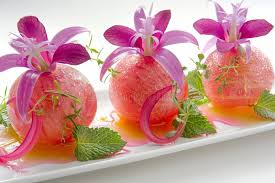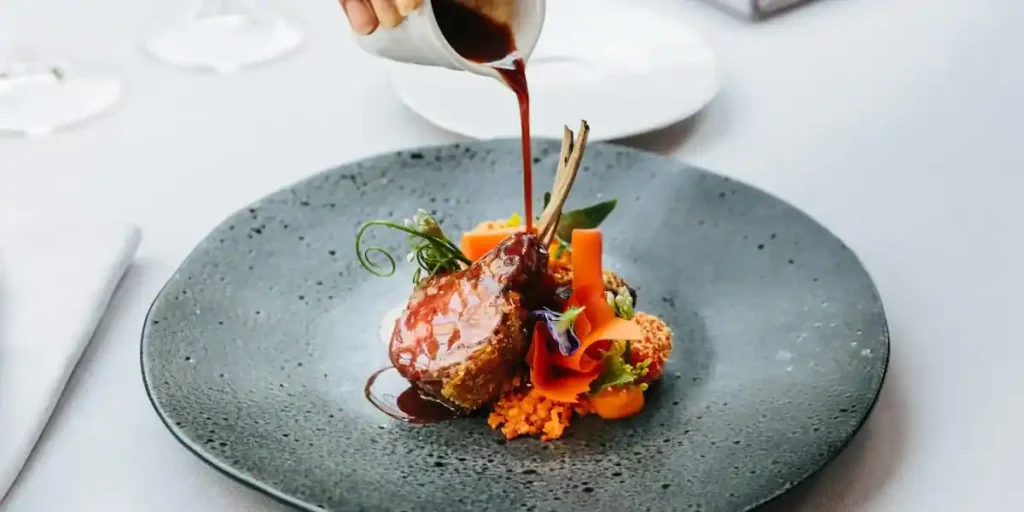Flowers are the embodiment of nature and they play an important role in the field of culinary arts. Incorporating flowers in gastronomy is not a new technique. A long time ago, Ancient Romans, Greek, and Chinese used to include edible flowers in their daily appetite. The Romans were known to use violets and roses in their food. The Japanese used Sakura or Japanese cherry blossoms in their cuisines. The French used calendula, which is the most universally recognized edible flower. The Victorians often used flowers in their food, associating them with elegance. Violets are the most used flowers in desserts. The Chinese often used chrysanthemum petals stirred into soup or included with tea and The Indians used the papaya flowers in their cuisines, which were included in salads and also cooked with potatoes.
A variety of flowers or inflorescences like broccoli and artichoke were traditionally consumed in Asian countries like China, India, and Japan. Artichoke which originated from the Mediterranean has an edible large flower that is very appreciated as food.
Flowers have importance in cultural consumption, as Dandelion is cited in the Bible as one of the bitterest herbs consumed in salads. Saffron (Crocus Sativus) is mentioned in the song of Solomon. Some of the flowers were cultivated by the Greeks, such as artichoke, poppy, carnation, and lotus.
Edible flowers are used in many styles of cuisines and can be found on menus all around the world. These flowers provide a unique burst of flavor and color to many dishes, including salads, sauces, beverages, and entrees. Some of them may even offer health benefits.
Lavender is used to improve mental health, helping to relieve anxiety, depression, and insomnia, and cure canker sores, and hair loss condition. Culinary Lavender is an incredible herb for cooking as it enhances the flavor and appearance of the food. It is best used with fennel, oregano, rosemary, thyme, sage, and savory. It has a sweet, floral flavor, with lemon and citrus notes.
Hibiscus is a flowering plant that is used to brew tea. It is mostly used in teas, relishes, jams and salads. It is believed to help reduce blood pressure and cholesterol levels. Hibiscus is well known for its culinary and medical applications.
Honeysuckle has been used in traditional Chinese medicine for years, the fragrant blossoms, typically light yellow or white, hold nectar that can be eaten straight from the flower. In the culinary world, honeysuckle is most often used to make tea or a fragrant flavorful syrup.
Nasturtium is a culinary favorite because of its bright color blossoms and unique, savory flavor. Both the leaves and flowers are edible. They feature a peppery, slightly spicy flavor and the blossoms are milder than the leaves. They make a beautiful garnish for cakes, pastries, and salads.
Borage is an herb that produces delicate, star-shaped flowers. Borage is used to treat minor ailments such as sore throat or cough. Borage has a slightly sweet flavor which is wonderfully used to make punches, lemonade, gin and tonics, sorbets, chilled soups, cheese tortas, and dips. They are used in garnishing desserts, salads, and cocktails.
Roses are rich in antioxidants that are used to prevent cardiovascular disease. Rose petals are edible and have a very aromatic, floral, and slightly sweet flavor. They can be eaten raw, mixed into various fruits or green salads, or dried to mix herbs. They are also used to create rose-infused beverages, jams, and jellies.
Violets are sweet, perfumed flavor. They are in purple or yellow to apricot and pastel hues. They are used to embellish desserts and iced drinks.
Calendula is also known as marigold. Its flavor ranged from spicy to bitter, tangy to peppery. Their taste resembles saffron and they are sprinkled on soup, pasta or rice dishes, herbs kinds of butter, and salads.
Herb flowers are the tastiest as they are foliage and very attractive when used in salads.
Chervil flowers are delicate white flowers with an anise flavor. Its taste is easily lost by drying the herb or by heating it too much. That’s why it is added at the end of cooking or sprinkled on in its freshness.
Mint the flavor is minty and depends on the variety. Mint flowers and leaves are greatly used in Middle Eastern dishes.
Coriander, like the leaves and seeds, its flowers have a very strong flavor. They are used to sprinkle to taste on salads, bean dishes, and cold vegetable dishes.
Basil depending on the type, are either white, pale pink, or a delicate lavender. The flavor is milder. They are sprinkled on salad or pasta for a concentrated flavor and a spark of color that gives any dish a fresh look.
There are several reasons why we should use edible flowers in our menus. In today’s time edible flowers, blossoms, and blooms are once again being served as the crowning touches to the culinary masterpieces, in cocktails and mocktails.
Edible flowers intensify the flavors of the food. They also provide texture and crunch to the food and also create a pleasing aroma which is an important attribute, since smell attracts consumers, sparks curiosity, and stimulates consumption and flowers bring a peculiar flavor and aroma to the preparations.










